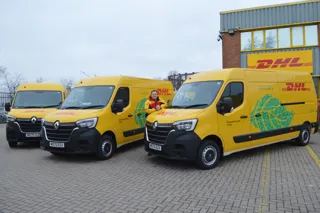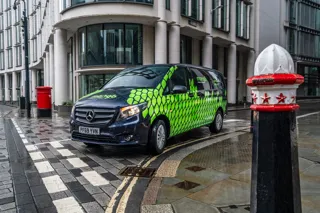Author: Roger Brereton, head of sales at Pailton Engineering
In December 2020, Cyber Monday saw a record-breaking $10.8 billon spent in a single day, the largest online shopping day in US history.
The continuing growth of e-commerce is encouraging vehicle manufacturers and logistics companies to focus on solutions for making deliveries more efficient and environmentally sustainable.
The final mile, or last mile, of a delivery refers to the transportation of goods from the transportation hub to the final destination.
If you speak to anyone who is familiar with the delivery ecosystem, they will tell you that this final mile is the most difficult.
It is also, however, the easiest to electrify.
Those commercial vehicles responsible for the middle mile – delivery from the depot to the stores – are large and must travel long distances.
They require very heavy, expensive batteries and range anxiety becomes more of an issue for long haul journeys.
That’s why vans are the next frontier on the electrification front.
The technology now exists to make this commercially viable for the first time.
The green mile
There is an ongoing debate over the environmental impact of e-commerce.
Does the shift away from high street shopping to online deliveries produce a net reduction in carbon emissions?
The short answer is that there is no answer – experts don’t agree on how best to measure this.
While there might be disagreement on the net contribution of e-commerce to our carbon footprint, there is less disagreement about the benefits of delivery companies electrifying their fleets.
In the US, for example, transportation is responsible for over 25% of greenhouse gas emissions, more than any other sector.
Some have argued that even if electric vehicles (EVs) have no tailpipe emissions, the electricity used to charge them would still leave a substantial carbon footprint, thereby making the switch to EVs pointless without first de-carbonizing the grid.
Recent academic research has debunked this argument, showing that in 95% of the world, EVs produce less CO2 emissions than fossil fuel powered cars.
The small exceptions are in countries like Poland, which rely heavily on coal to produce electricity.
Governments around the world are incentivising businesses to switch to electric fleets.
For example, in the UK, EVs are eligible for a 100 per cent discount on charges in the London congestion zone.
A vehicle entering the zone five days a week for 50 days a year would therefore save £2,625.
Electric savings
Emission charges are one reason there is now also a commercial incentive for switching to electric fleets.
Continuing with the example above, in addition to the congestion charges, last mile delivery vehicles will also face charges for entering the capital’s Ultra Low Emission Zone (ULEZ).
A non-compliant van entering the ULEZ five days a week for 52 weeks of the year would face a hefty charge of £3,250.
EVs also allow businesses to save money on maintenance and fuel costs.
Until recently, these lower maintenance costs compensate for higher purchase prices. However, the cost of the vehicles themselves is constantly coming down.
And as more companies make the switch to electric, economies of scale and improvements in battery technology will drive down the costs further.
Engineering challenges
Even when the environmental and business case for switching to EVs is strong, things are not always so simple in practice.
That’s what Amazon found out when it first sought to electrify its fleets.
The company had begun by assuming that it simply needed to find a model already on the market that matched its requirements.
What it found instead was that the existing vehicles did not meet is specific requirements or those that did were not produced on a large enough scale.
The company therefore entered into a partnership with Rivian to help design its own vehicles and play a role in scaling up the market.
Amazon has ordered 100,000 vans from Rivian – the largest single purchase of electric trucks in history.
Other companies are following suit. UPS, for example, announced in January 2020 that it was purchasing 10,000 electric vans from UK company Arrival.
The Amazon-Rivian partnership highlights the importance of design flexibility.
Both vehicle manufacturers and their parts suppliers need to be able to adapt to the specific requirements of different delivery ecosystems.
Many companies will trial a dozen or more alternative fuelled vehicles on a small scale before switching permanently from diesel engines, so the ability to offer customisable designs and bespoke parts will help accelerate the electrification transformation.
Another key engineering challenge is the infrastructure.
Those companies that opt for electrification of entire fleets must also invest in the right charging infrastructure.
Many logistics companies are now designing their depots with this in mind, planning ahead for the future.
Last mile delivery is one of the most logistically challenging parts of the delivery ecosystem.
As e-commerce continues to soar, so too does the pressing need to make the final mile greener and more efficient.
Thankfully, the technology to do this is becoming better all the time. At Pailton Engineering, we are proud to have been involved in the design of some of these delivery vans and look forward to bringing our expertise to bear on the next frontier for vehicle electrification.





















Login to comment
Comments
No comments have been made yet.